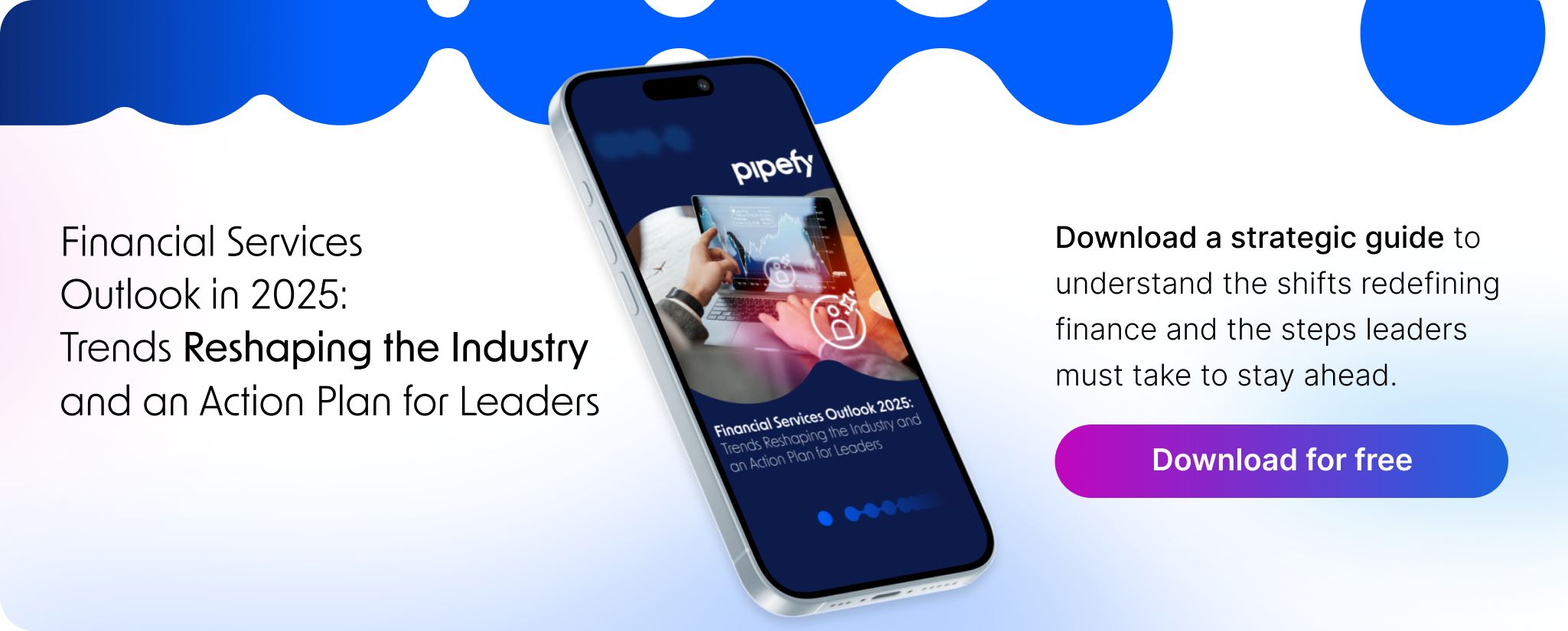
Customer support continues to play a crucial role in shaping brand perception and loyalty. However, many companies still face challenges in meeting rising expectations for quick and accurate service. A McKinsey report (2023) highlights that two-thirds of millennials now expect real-time responses, while most customers look for consistency across service channels. Even so, delays often result from fragmented tools, turnover, and manual processes.
This is especially relevant in industries like financial services, insurance, and consumer goods, where complexity and regulatory pressure make operational efficiency even harder to maintain. These conditions increase the importance of identifying ways to simplify and optimize support workflows.
With that in mind, in this post, we’ll explore typical causes of delays and point to how operational design and platforms like Pipefy may contribute to faster and more consistent support delivery.
Why Support Speed Isn’t Just a Service Metric
Improving the speed of customer support has a cascading effect that extends beyond immediate service interactions. It influences how customers perceive the brand, how much time and money internal teams spend managing issues, and even how well an organization stays compliant.
- Revenue: When customers receive quick and effective help, they are more likely to remain loyal, which directly supports customer retention.
- Cost: Efficient workflows reduce time spent on manual tasks, allowing teams to solve more issues without adding headcount.
- Compliance: Fast and traceable processes help ensure that teams meet service-level commitments and regulatory expectations.
- Loyalty: Responsive support strengthens the relationship between company and customer, increasing long-term satisfaction and trust.
Viewed from this broader lens, the speed of support can be a strategic asset, not just an operational benchmark.
What’s Slowing Your Support Team Down?
1. Fragmented Systems
Support teams often work across several platforms: email, CRMs, spreadsheets, and helpdesk tools. This setup can lead to delays in accessing information and create inconsistencies in how support is delivered.
2. Manual Request Routing
In many cases, even with a ticketing system, routing still involves manual steps. This increases the chance of misdirection, reassignments, and slower turnaround.
3. No Clear SLA Tracking
When there’s no clear visibility into SLAs, high-priority tickets might not be addressed on time. Managers may struggle to identify where delays are happening.
4. Inconsistent Processes
If agents follow different steps for similar requests, the support experience can become inconsistent and harder to manage.
5. Disconnected Team Interactions
Support often depends on coordination with other departments. When those connections aren’t coordinated, SLAs can easily be missed.
It’s worth noting that many service delays take place before the ticket even arrives at the appropriate team, often due to inefficiencies in intake or routing.
Read more: Find out how to build custom workflows and boost operational efficiency
Want to Speed Things Up? Start with Operations

Accelerating support isn’t only about team size. It often depends more on clear processes and visibility. Below are a few areas that might help improve support operations:
Structured Intake with Forms
Support teams often receive incomplete or unstructured requests, leading to delays and extra follow-ups. Using well-defined forms with fields like issue type, urgency, and account information can improve clarity from the beginning. This helps teams prioritize and handle requests more efficiently.
Smarter Routing Logic
Manually assigning tickets can create gaps. With clear criteria, such as topic, urgency, or department, it’s possible to build logic that distributes requests more quickly. Over time, this reduces misassignments and shortens response times.
SLA Monitoring and Alerts
Tracking service level agreements helps teams stay on top of deadlines. Timers and automated notifications can be set up to flag when tasks approach or exceed defined limits, allowing managers to act before delays escalate.
Coordinated Team Transitions
Support often involves participation from more than one department. When these teams coordinate their activities and transitions clearly, it helps prevent issues where tickets pause or lose timing. Organizing related steps to happen simultaneously or in a connected way can help move requests forward more smoothly.
Request Categorization with AI
When large volumes of tickets come in, classifying them accurately becomes a challenge. AI tools can assist by learning from past cases and sorting incoming requests by type, priority, or channel. This speeds up triage and reduces manual sorting effort.
Sample Case: Regional Retail Support
Consider a company with hundreds of retail locations receiving post-sale customer inquiries. If support requests are still handled by email, responses may take longer than expected.
Instead, structured digital forms could be used to capture issue type and urgency. Automated rules might then route the tickets to the correct internal teams, applying appropriate SLAs. Over time, the team could monitor metrics to evaluate gains in response consistency and customer satisfaction.
Which Metrics Show You’re Really Getting Faster?
To evaluate progress in support speed, consider tracking:
| Metric | What It Measures | Why It Matters |
| First Response Time | Time from request submission to first reply | Early engagement drives satisfaction |
| Time to Resolution | Total time to close the request | Indicates operational efficiency |
| SLA Compliance Rate | % of tickets resolved within SLA | Key to governance and customer trust |
| Ticket Reassignments | Number of times a ticket changes owners | Highlights process and routing issues |
| CSAT Score | Customer satisfaction rating after the resolution | Reflects speed and quality in one metric |
Examples from Key Industries
Financial Services
In the financial sector, support requests often relate to sensitive processes like dispute resolution or account access. These processes involve multiple checks and must comply with strict regulations. Structured workflows can help minimize manual handling and provide better oversight, which contributes to more consistent SLA compliance and faster resolution times.
Insurance
Insurance companies regularly handle high volumes of claims that differ in urgency and complexity. When triage processes are supported by automation, it becomes easier to route each claim to the right team and manage prioritization. This approach helps reduce the risk of delays and supports a more uniform experience across different customer types and policies.
Consumer Goods
Companies with large-scale logistics and service operations often face challenges due to disconnected teams and slow communication. Having a unified view of incoming customer requests can help align departments such as logistics, fulfillment, and customer service. Also, providing timely status updates and tracking tasks clearly may reduce repeated follow-ups and enable quicker responses.
Common Mistakes and How to Avoid Them
Efforts to improve customer support can lead to valuable results, but they may also encounter some practical challenges along the way. Common issues include:
- Hesitancy to adopt new tools: Teams might feel more comfortable using familiar systems, especially if new platforms seem too complicated or disruptive.
- Lack of coordination between departments: Fragmented processes can cause confusion and miscommunication, even when changes are small.
- Inconsistent or unclear data input: Without clear instructions, the quality of support data may suffer, making it harder to prioritize and solve requests efficiently.
- Limited attention to training and onboarding: When users don’t feel confident using a new system, they may fall back on manual processes or avoid the platform altogether.
To reduce these risks, organizations can assign clear roles for managing changes, promote open communication across teams, and roll out new systems gradually with the right support and guidance.

What’s Next: Support That Anticipates Needs
Customer support is moving toward solutions that do more than just respond, they help prevent problems from occurring in the first place. AI technologies are becoming more effective at recognizing signs of potential issues, such as repeated questions or delayed responses, before a formal request is made. This allows teams to take action earlier and offer more proactive service.
At the same time, many companies are focusing on bringing together interactions from different channels, like email, chat, and social media, so customers receive consistent support, no matter how they reach out. AI tools can also help support teams reply faster by suggesting answers based on earlier cases.
Some support systems are beginning to react to voice inputs or detect specific patterns in user behavior to trigger the next step in the workflow. These features can make it easier to respond quickly, even as volumes increase.
Building on this trend, Pipefy is expanding its AI Agents features to support these developments. The platform enables teams to adopt these innovations more easily, helping them design support operations that are faster, more adaptive, and better prepared for evolving expectations.
Read more: Get a glimpse into the future and find out what’s next for AI Agents
FAQ
What is the typical SLA for customer support teams?
SLAs vary, but most teams aim for a first reply within 4 to 24 hours and resolution in 24 to 72 hours.
How do AI Agents enhance support workflows?
They automate ticket sorting, prioritization, and suggest replies to speed up resolution.
Can Pipefy replace our current helpdesk system?
Yes, or it can work alongside your current setup, depending on what fits your team best.
How long does it take to implement Pipefy in support teams?
Most teams go live in under 30 days, thanks to its no-code structure.
Is Pipefy aligned with industry compliance standards?
Yes. It supports compliance with features like audit logs, role-based access, and encryption.
How Pipefy Helps Teams Deliver Faster and Smarter Support
Pipefy is a no-code/low-code platform that empowers operations, support, and back-office teams to design and manage their own processes with full control. Instead of relying on scattered tools and manual tasks, teams can build structured, agile and consistent workflows.
With Pipefy, companies can:
- Standardize request intake with tailored forms
- Route tickets based on urgency or topic
- Monitor SLAs with real-time dashboards
- Automate classification with AI Agents
- Keep full traceability through audit logs
These features help teams solve issues faster, reduce cross-team delays, and improve service quality, without having to add new staff. For teams facing growing customer demands, Pipefy combines automation, flexibility, and oversight in one platform. Click the button below to see how it can support your customer operations:










